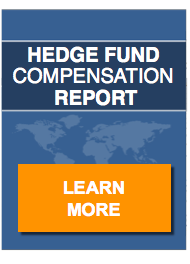According to this article in the New York Post, “hedge funds are dancing with the devil”, but the persona of that devil is something of a mystery. Is that devil a hostile press or disgruntled investors? Is it the SEC and other lawyers cruising for a payday or is it superior competition? Maybe the collective hedge fund industry has a death wish…we just don’t know!
No reasonable person could put together as persuasive argument against the fact that hedge funds, taken together, have traveled a difficult road since the financial crisis. However, the same can be said about a variety of industries. Examples include the automotive industry, the construction industry, the manufacturing sector, the retail sector and a host of others.
However, few, if any of these industries, were the target of legislative action in the same way the hedge fund industry was targeted. The broad financial sector was vilified in the media and the hedge fund industry was the poster boy. Legislative and media focus combined to make a recovery particularly difficult for hedge funds.
The Facts Tell a Different Story
In the first quarter of 2017, hedge fund assets under management (AUM) have reached $3.07 trillion, topping the previous record of $3.02 trillion, which was achieved in the fourth quarter of 2016.
The HFR Market Microstructure Report reveals that hedge fund launches have increased almost 24 percent as compared to 2016 fourth quarter launches. Hedge fund closures have decreased by around 6 percent in the same quarter-to-quarter comparison.
While it is true that the total number of hedge fund firms has declined from a peak of almost 11,000 to less than 9,800. This is indicative of survival of the fittest rather than the pessimistic view of some in the media who would hail the decline as the end of the industry.
The real reason for the decline in the number of hedge funds is the issue of performance. The top 10 percent of hedge fund performers produced returns averaging 14.1 percent, a respectable result by any measure. However, the bottom 10 percent, the poorest performers, had gains averaging negative 7 percent—this disparity drives hedge fund closures.
The Future of the Industry
The hedge fund industry’s future will likely be determined by performance. The poorly engineered Yugo is no longer a production automobile and poorly performing hedge funds will face a similar fate. For this reason, one should expect to see a continued decline in the number of hedge funds, but the hedge fund industry will survive, just as the automotive industry has survived.
Hedge funds will survive by meeting performance goals and the expectations of its investors. The hedge fund industry has demonstrated its flexibility with regard to fee structures. Less than one-third of all hedge funds charge management and performance fees greater than or equal to the traditional 2-and-20 formula.
The Cadillac will always be more costly than the Chevrolet and the Yugos of the industry will fade from existence. Far from being “a dance with the devil,” it is the waltz of the free market economy.


